Marcus Wheeler led a very well attended walk to look at the trees of the Whiteknights campus of the University of Reading on Saturday 6 January. It was a cold grey morning, but after days of torrential rain and storm-force winds, the wind had dropped and the rain had ceased. The walk started from near the sports centre on the north-west side of the campus. First stop was a group of trees by the car park. Nearest was a Horse Chestnut Aesculus hippocastanum with big brown sticky buds. The tree looks at its best early in the summer, before the Horse-chestnut Leaf-miner moth has turned the leaves brown. Another of the trees, which had red buds, was identified as a Lime. Marcus then led the group across the nearest sports pitch to a mixed clump of mature trees. First inspected was a Sweet Chestnut Castanea sativa, a species which was introduced to Britain by the Romans. A spiny seed case helped in its identification. Nearby was a Turkey Oak Quercus cerris. Not far away was an enormous Giant Redwood Sequoiadendron giganteum with an estimated height of about 35 metres. This species was first introduced to Britain in 1853. The cones are covered in scales which look as if they have a smiley face across the middle. Next to be inspected was a Holly Ilex whose leaves were only prickly below the browsing line. A group of Paperbark Birches Betula papyrifera had attractive white trunks, while a Beech Fagus sylvatica had characteristic long pointed brown buds. Its trunk is smooth, which makes it an attractive target for graffiti carvers. Next to be inspected was a Ginkgo Ginkgo biloba, also known as the Maidenhair Tree. It was a ‘fossil tree’, originally known only from the fossil record, with recognisably related fossils dating back almost 300 million years to the Permian age. Then living trees were discovered in a remote area of central China, one of the world’s biodiversity hot-spots. There are separate male and female trees. The female trees drop rather unpleasant smelling and tasting fruits, so most planted trees are males. Next find was a specimen of Cretan Maple Acer sempervirens, the only evergreen maple. It did indeed have small green leaves. Next, Marcus pointed out a Foxglove-tree Paulownia tomentosa. It produces large, violet-blue, sweet-smelling flowers in early spring. Members had to tread carefully because the grass below the trees had been planted with bulbs and their new leaves were already reaching up through the turf. There followed a series of unusual trees. Japanese Redwood Cryptomeria japonica is a large tree which superficially resembles the Giant Redwood, but has longer leaves and smaller cones. The seeds of the Kentucky Coffee Tree Gymnocladus dioicus were roasted and used as a substitute for coffee beans by the early settlers – a risky business since the uncooked seeds are toxic. A Monterey Pine Pinus radiata had leaves in bundles of three. Then there was a particularly large Swamp Cypress Taxodium distichum, a deciduous conifer from the Everglades in Florida. At the end of the library buildings was a London Plane Platanus x acerifolia, with characteristic dangling seed balls and flaking bark. Near Park House was a group of Cedars. A large Cedar of Lebanon Cedrus libani had spreading level branches while a Himalayan Cedar C. deodara had descending branches and an Atlas Cedar C. atlantica had ascending branches. The next part of the walk was through the Harris Garden. Near the entrance were a number of unusual trees, including a Caucasian Wingnut Pterocarya fraxinifolia with dangling strings of seedpods, a Great White Cherry Prunus ‘Tai-haku’, a Paperbark Maple Acer griseum, a Persian Ironwood Parrotia persica and a Wheel Tree Trochodendron aralioides. Butcher’s-broom had red berries and the first snowdrops were coming into flower. The garden was looking very tidy and well cared for, with closely mown lawns, weed-free flower beds and neatly trimmed-back perennials. Continuing further into the garden, there were two enormous Turkey Oaks, with lower branches bending down to the ground. To the left of the path were a pond, a Scarlet Oak Quercus coccinea which is native to eastern USA and a Caucasian Alder Alnus subcordata whose seed cones are larger than those of English A. glutinosa or Italian A. cordata Alders. At this point, a hunting Sparrowhawk flew past. A small and very spiky tree was identified as a Honey Locust Gleditsia triacanthos. Nearby was a small Monkey Puzzle Tree Araucaria araucana which has flowers in summer. Continuing along the path, further sightings included another Ginkgo, a hybrid Strawberry Tree Arbutus x andrachnoides and a fastigiate Oak (one which grows in a columnar shape). A drumming woodpecker was heard. The path went past the cherry ring, which is a stunning sight at blossom time. Next seen were a Himalayan Cedar, a surprisingly big Bay Tree Laurus nobilis and another Giant Redwood. The path began to loop back towards the entrance to the garden, passing a Phoenecian Juniper Juniperus phoenicea with berries, a Wollemi Pine Wollemia nobilis from Australia (another fossil tree), a fastigiate Beech and an evergreen Holm Oak Quercus ilex. Marcus then led the group back across the campus to the original starting point near the sports centre.
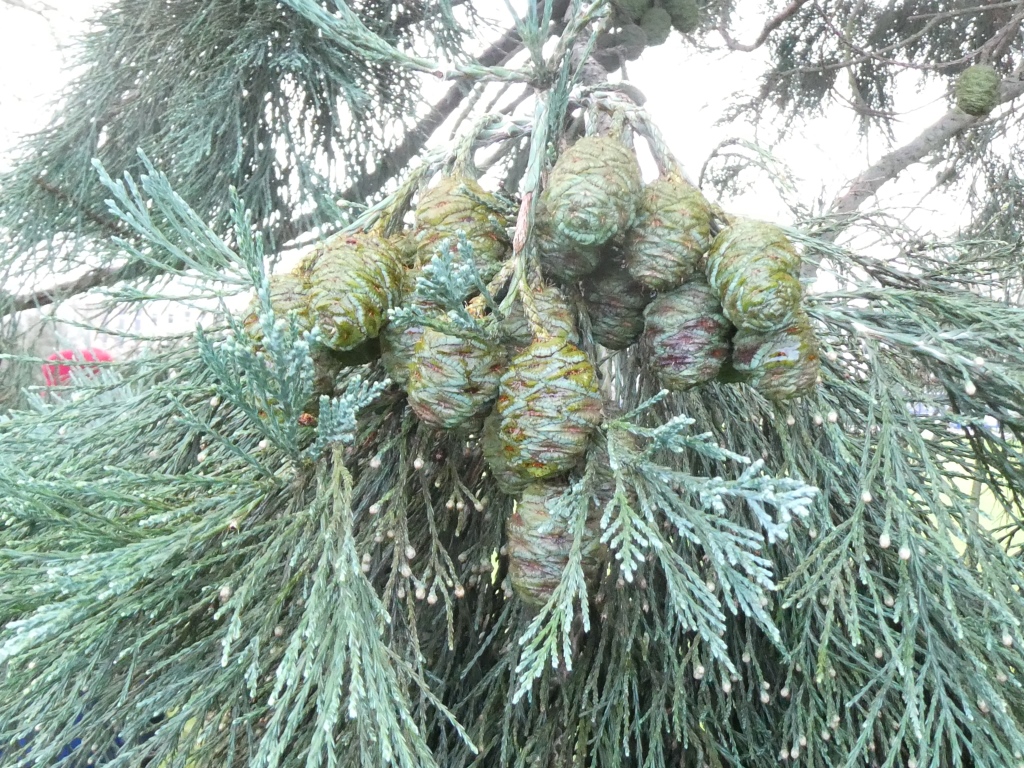
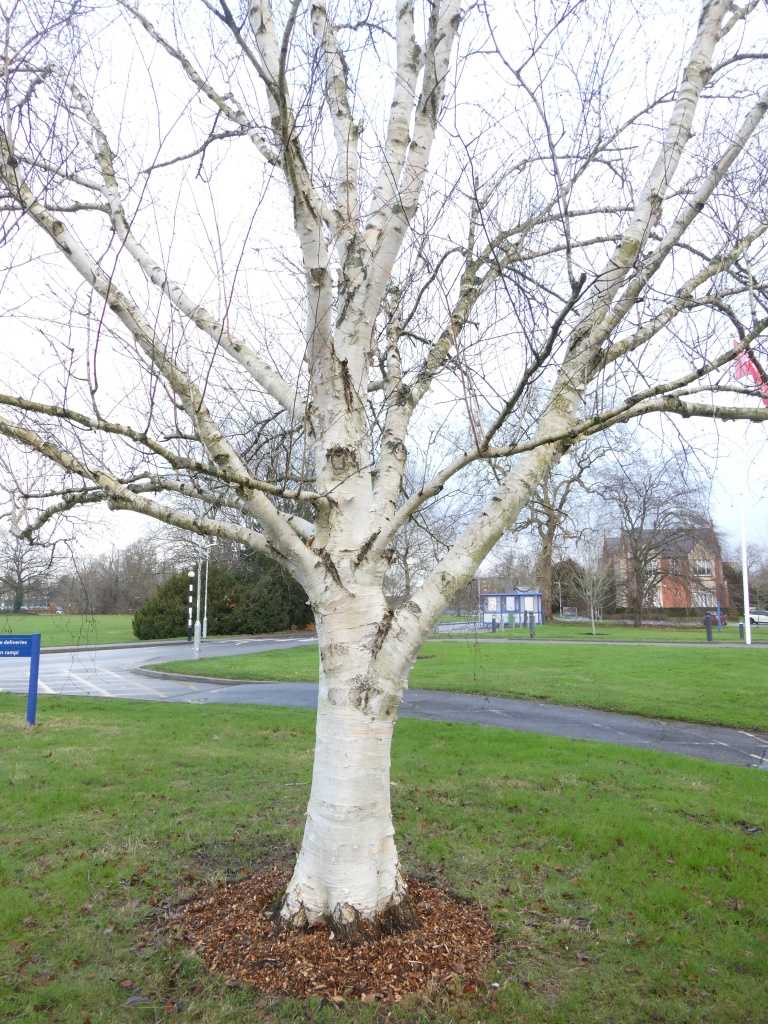
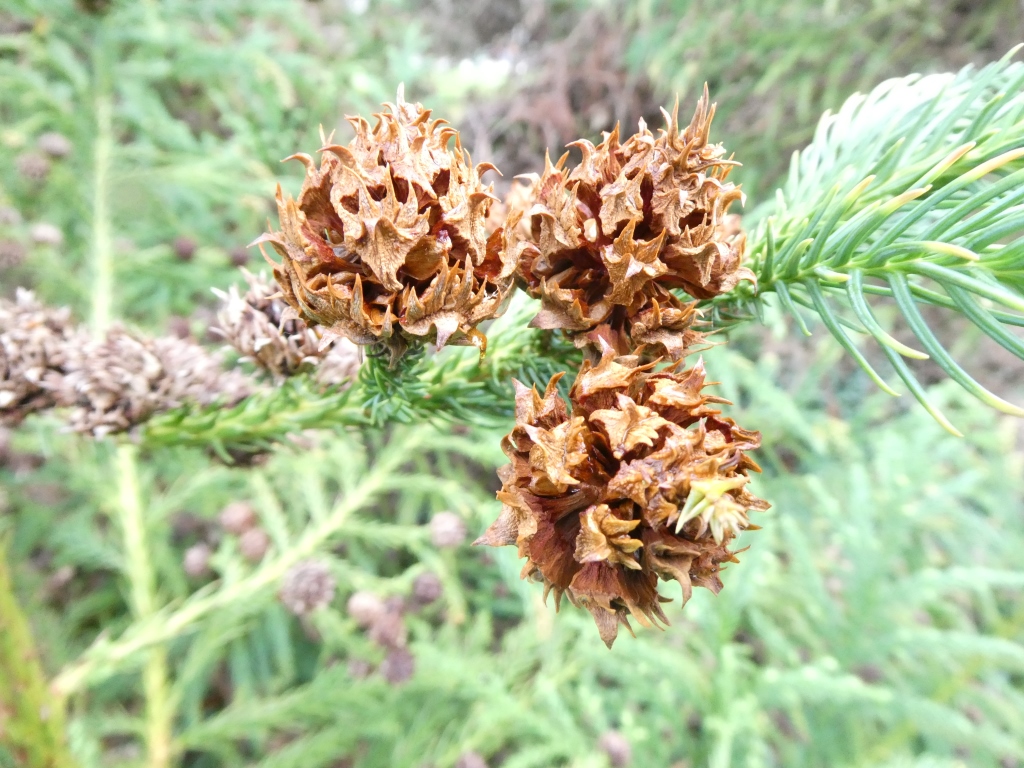
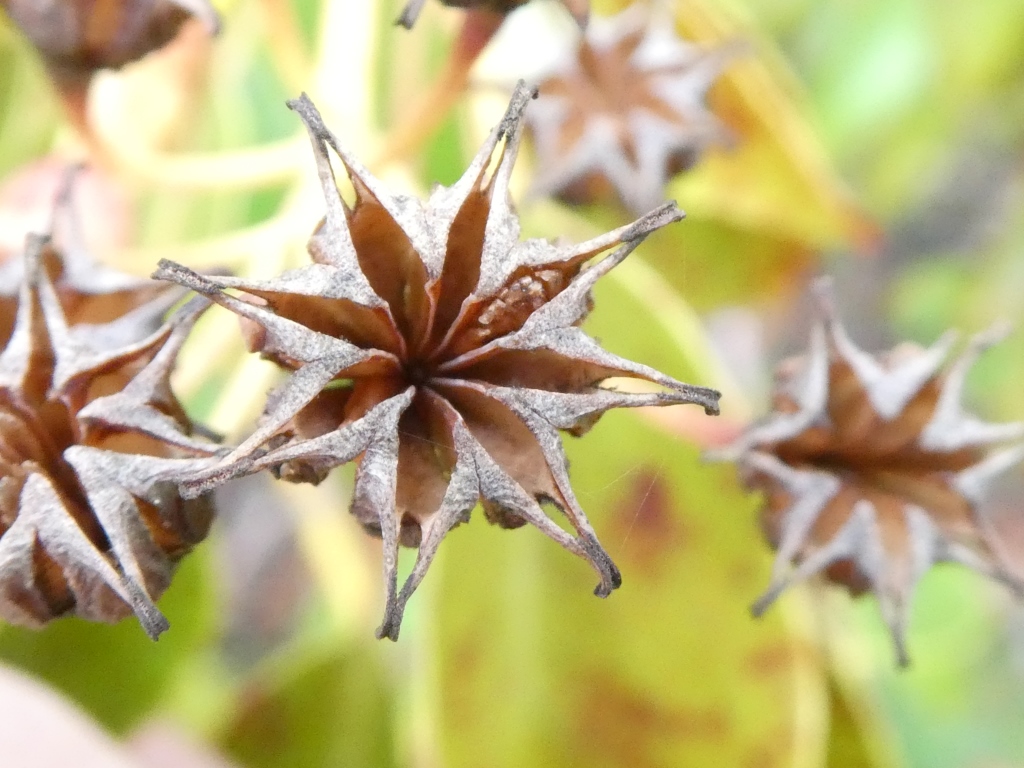
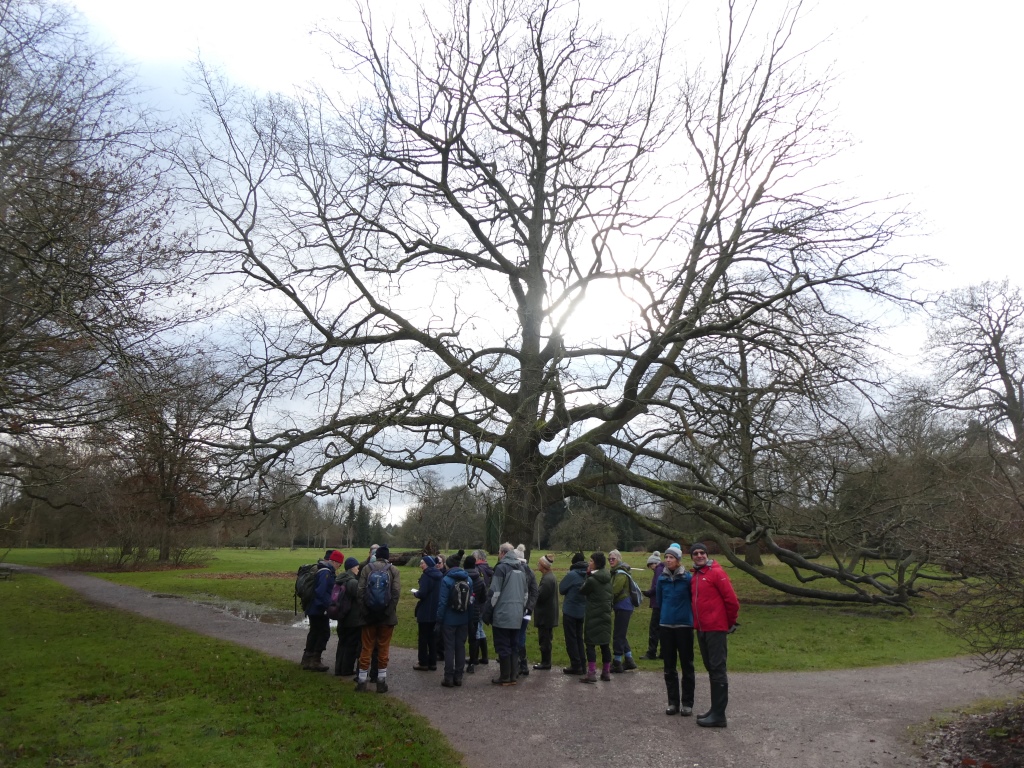
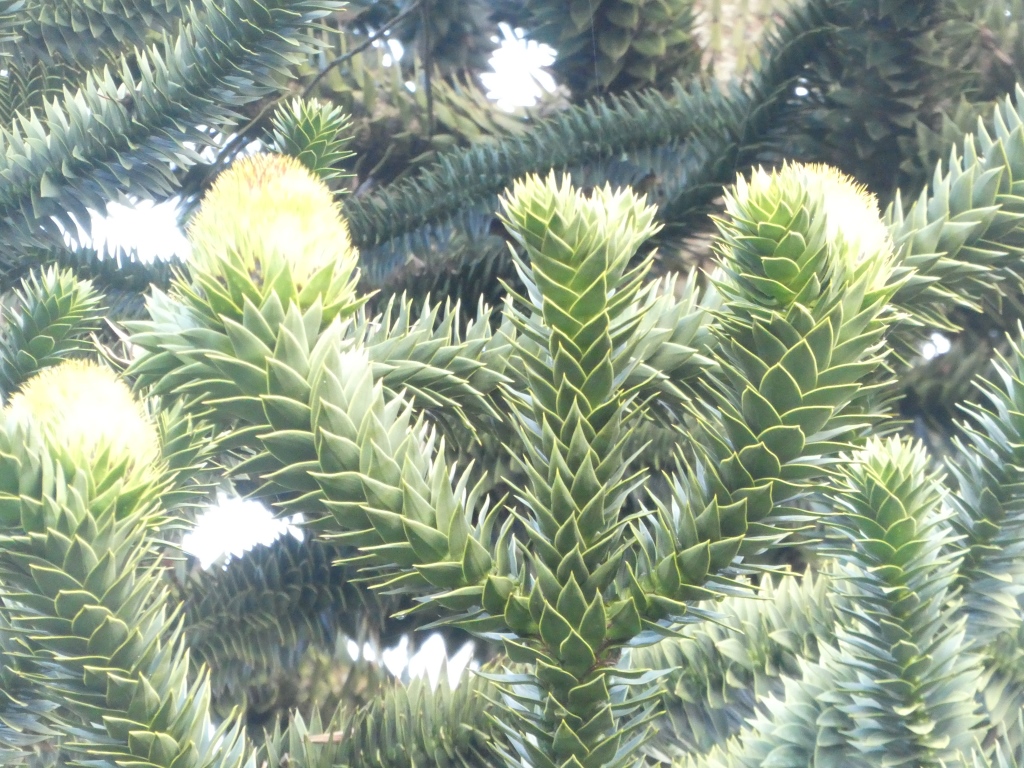
Pictures by Tom Walker
